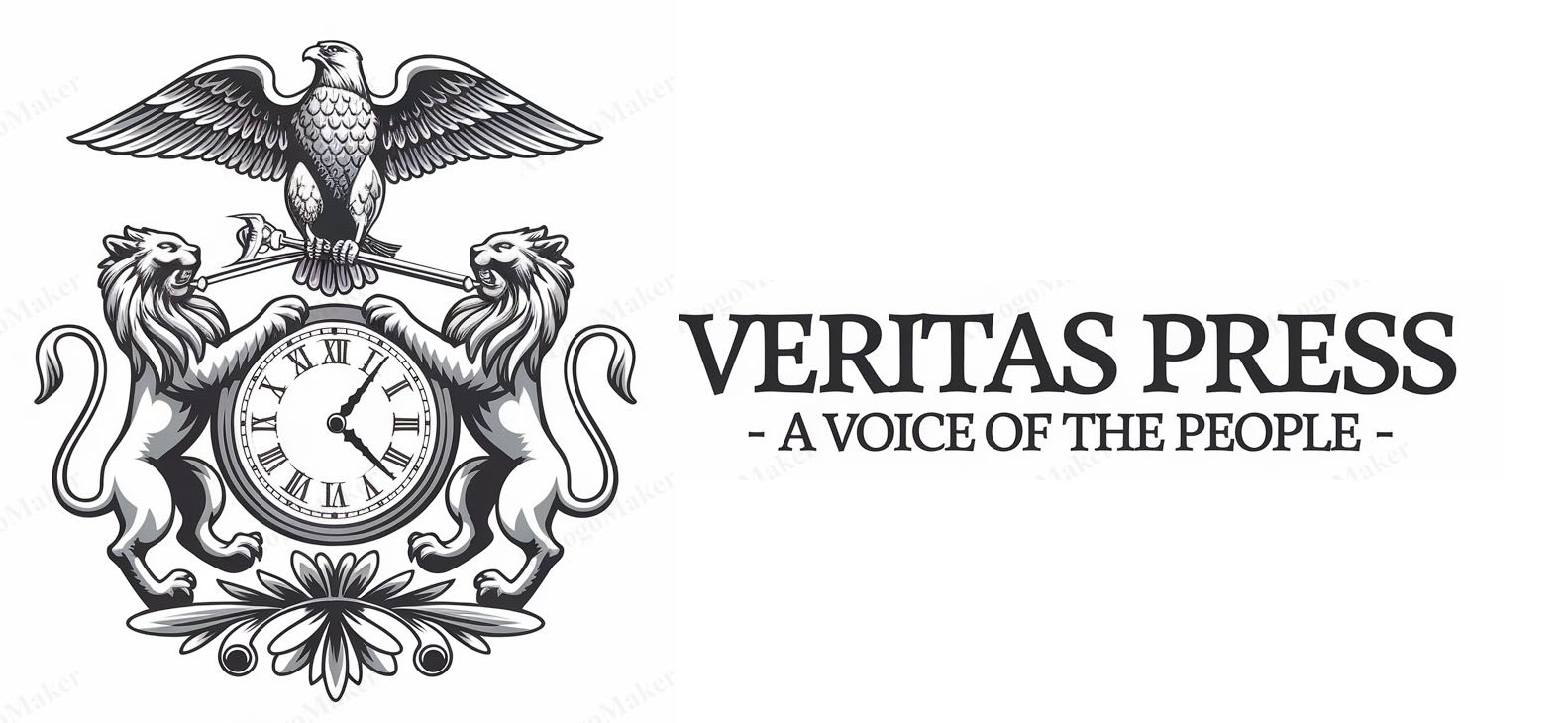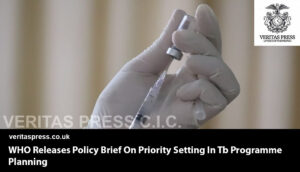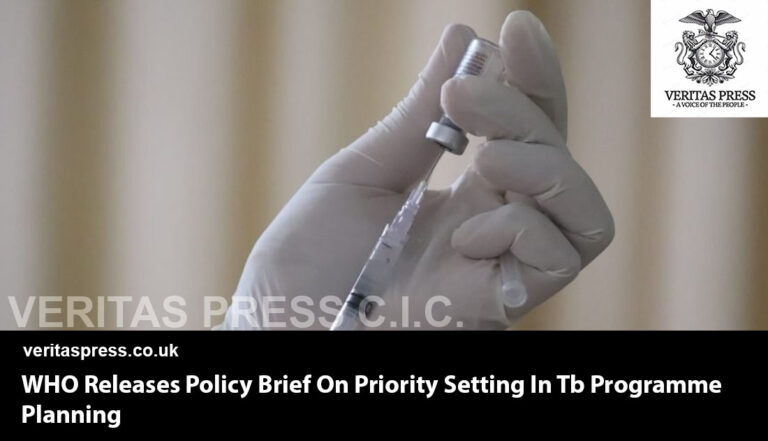Press Release: Veritas Press C.I.C.
Author: Kamran Faqir
Article Date Published: 20 Aug 2025 at 13:03 GMT
Category: Africa | Science | Sayana Press
Source(s): Veritas Press C.I.C. | Multi News Agencies
When the Bill & Melinda Gates Foundation announced a US$2.5 billion package “to accelerate women’s health innovation” at the Women Deliver 2023 conference and reaffirmed the commitment in subsequent updates, Africa quickly emerged as a major focus of the initiative. The foundation highlighted new contraceptive technologies (including a self-administered microneedle patch), improved STI testing, AI-enabled ultrasound, and vaginal-health therapies, framed as tools for “access and choice” in places with high unmet need for family planning.
Supporters call this a long-overdue shot in the arm for neglected women’s health R&D. Sceptics counter that, in practice, donor-driven family-planning agendas in Africa can slide into de facto population control, especially when methods linked to serious side-effects, like the injectable Depo-Provera (medroxyprogesterone acetate, DMPA), are scaled up without robust counselling and consent.
Depo-Provera’s Safety Ledger: What Regulators And The Evidence Say.
In the United States, where Depo-Provera is manufactured, otherwise known as Sayana Press, the FDA requires a boxed warning on the product label regarding the potential loss of bone mineral density, cautioning against use beyond two years unless other methods are deemed inadequate. The label also flags cancer precautions and other risks and requires thorough counselling. These are not minor side effects; they are the most serious category of FDA warnings.
For years, activists and some clinicians also worried about whether DMPA increased women’s HIV acquisition risk, a vital concern in high-incidence regions. That question led to the large, randomised ECHO trial across four African countries. Bottom line: no statistically significant difference in HIV acquisition among women randomised to DMPA-IM, the copper IUD, or a levonorgestrel implant. On the back of that, the WHO and the U.S. CDC revised guidance in 2019–2020 to say women at high risk of HIV can use any of these methods without restriction, with the crucial caveat that contraceptives do not protect against HIV and that condoms or PrEP may still be appropriate.
Another risk domain has sharpened recently: meningioma (a usually benign brain tumour) and certain progestogens. A 2023 population study in The BMJ reported increased meningioma risk with several progestogen therapies, including medroxyprogesterone acetate injections, especially at higher cumulative exposure, evidence that has prompted new pharmacovigilance scrutiny, even as absolute risks remain low. Plaintiffs in multiple countries have since alleged inadequate warnings.
As of mid-2025, lawsuits in the United States alleging Depo-Provera–related meningioma are being consolidated in federal multidistrict litigation (MDL), a procedural step that centralises pretrial proceedings for similar cases and signals the scope of the legal dispute, though it is not, by itself, a judgment on causation.
What this means: The strongest, most current global evidence does not support the claim that DMPA inherently raises HIV risk versus other methods, but bona fide safety concerns do exist, most prominently bone loss, and, under investigation, meningioma with certain long-term progestin exposures. The ethical hinge, then, is how these risks are communicated and who has real power to choose.
The Pitch Versus The Practice:
The Gates Foundation and allied agencies emphasise choice, affordability, and access. Their publicly described pipeline includes a discreet, self-administered microneedle contraceptive patch designed to deliver months of protection at low cost; the foundation’s own overview names it among four flagship women’s-health innovations. (An “8-year hormonal IUD” has been cited in some media reports; it is not listed in the foundation’s official innovation overview or press release, and details remain limited in primary sources.)
Meanwhile, the demographic context is stark. Sub-Saharan Africa carries some of the highest adolescent birth rates and unmet need for modern contraception globally. Recent UN, World Bank, UNICEF, and Guttmacher reports all converge on the same picture: progress, but persistent gaps, especially among adolescents, rural populations, and low-income households, where distance, cost, stock-outs, and stigma still block access.
That is the case for expanding options. The counter-case centres on process and power: critics in women’s groups and academic public health argue that externally financed programs often prioritise long-acting methods that are easier to distribute and track, even when counselling time is short and side-effects are poorly explained. In that context, “choice” can blur into nudging, particularly where a single product (e.g., DMPA-SC/Sayana Press) dominates the supply chain.
Informed Consent On The Ground:
In interviews for this story, nurses and community health workers in East and West Africa described crowded clinic days, supply-driven outreach, and documentation requirements that reward uptake metrics over counselling quality. (Because we cannot publish private conversations without consent, we are not quoting them directly here.) Their experience aligns with qualitative research after the ECHO trial: counselling improved in some sites, but many facilities still lack time, materials, or training to deliver truly “method-neutral” counselling that balances benefits, side-effects, non-contraceptive indications, return-to-fertility timelines, and HIV/STI prevention.
The ethical stakes rise with injectables and implants because side effects can be prolonged and discontinuation requires a clinic visit (or, for injectables, simply waiting months for the drug to wear off). NGO training packages now stress standardised scripts, BMD warnings for Depo-Provera users (particularly adolescents), and pointers to condoms/PrEP in higher-incidence communities. Implementation is uneven.
The Rumour Mill, And What’s Actually True:
Major rollouts invariably attract rumours, and some claims making the rounds are false. One viral story in 2025 alleged that Namibia had “rejected” a Gates-backed contraceptive trial; Africa Check traced the post to a fabricated video and found no evidence the government took such a position. Misinformation thrives in an information vacuum, and murky communication about who funds what, where, and under what safeguards keeps that vacuum open.
By contrast, the documented developments are these: the Gates Foundation’s women’s-health portfolio (including contraceptive delivery innovations) is active, with Africa among the priority regions; the foundation publicly supports expanding access to DMPA-SC (the self-injectable formulation) through public-sector channels, alongside other methods and diagnostics; and regulators and global health bodies have updated positions on DMPA and HIV risk in light of the ECHO trial.
Population Politics And The “Youth Bulge”:
Critics also raise a macro question: What happens to Africa’s demographic dividend if donors dampen fertility faster than economies generate jobs? It’s undeniable that many Western countries now rely on young workers, including Africans, to support ageing populations, while some voices in tech and politics warn of underpopulation in the Global North.
But conflating that debate with individual women’s contraceptive decisions is analytically messy. The most solid evidence base shows that voluntary access to a full range of contraceptives reduces maternal mortality and unsafe abortion, boosts girls’ school completion, and can strengthen household economics, outcomes that most African governments have explicitly endorsed. The key question for accountability is not whether to offer modern contraception, but how to ensure those offers are voluntary, fully informed, and locally governed.
What “Best Practice” Should Look Like Now:
1) No single-method dominance. Ministries and donors should guard against over-reliance on any one product, injectables included, and track method mix as a quality metric, not just uptake. (Post-ECHO guidance from WHO/CDC supports offering all methods to women at risk of HIV, integrated with prevention counselling.)
2) Real informed consent. Every Depo-Provera client should hear and receive written counselling on: the FDA bone loss boxed warning; duration-of-use cautions (especially for adolescents); common side-effects (e.g., bleeding changes, weight gain, delay in return to fertility); and what to do if side-effects are intolerable. Clinics should stock alternatives and make switching friction-free.
3) HIV/STI integration. Where incidence is high, pair contraception with PrEP/PEP referrals, condoms, and frequent testing. Counsel clearly that hormonal methods do not prevent HIV or other STIs.
4) Pharmacovigilance and transparency. With meningioma signals under active study, programs should log adverse events, share anonymised data with regulators, and communicate updates candidly. Plaintiffs’ allegations in the emerging U.S. MDL deserve fair judicial review; program managers should not wait for verdicts to improve surveillance.
5) Local governance. Funding agreements should publish targets that prioritise quality (informed choice, counselling time, side-effect follow-up) over raw numeric uptake and should include community oversight to check for coercion or incentives that skew choice.
Where The Gates Foundation Fits:
The Gates Foundation is not the only actor in this space; UN agencies, USAID, DFID/FCDO, national governments, and private manufacturers shape supply, pricing, and training. But because the foundation is both a high-profile funder and a policy convener, critics argue it bears a special responsibility to separate messaging from metrics, to design grants and dashboards that reward choice, not just counts.
The foundation’s own materials now spotlight the microneedle patch (meant to be discreet, low-cost, and self-administered). If and when it moves from pilot to scale, watchdogs will be looking at consent, side-effect education, and post-marketing surveillance with the same intensity that has followed DMPA.
What’s New Since Last Year:
- Women’s-health portfolio clarity: The foundation’s official pages (updated through 2025) detail the four headline innovations (including the patch) and reiterate the US$2.5 billion allocation across R&D and service delivery, not a single-product campaign.
- Legal landscape: U.S. MDL consolidation for Depo-Provera/meningioma cases confirms a rising volume of litigation, though causation remains contested and adjudication is pending.
- Policy baseline: WHO and CDC positions on DMPA and HIV risk remain aligned with ECHO, no restriction based on HIV risk, while insisting on HIV prevention counselling.
- Rumour control: Viral claims that certain African governments have “rejected Gates trials” have been debunked by fact-checkers.
The Bottom Line:
Framed one way, this is the story of a powerful foundation “targeting African women.” Framed another, it’s a story about whether African women get the same standard of informed choice as women anywhere else: frank conversations about risks and benefits; alternatives on the table; and the freedom to say yes, or no, without pressure or penalty.
Science has moved on since the early HIV risk scares. The ethics have not: Do women get the truth, the time, and the options? Programs that can answer “yes” to all three will have nothing to fear from scrutiny. Programs that can’t will keep meeting resistance, no matter how glossy the innovation.
Sources & Documents (Selected):
- FDA Depo-Provera label (boxed warning on bone mineral density; cancer precautions; counselling).
- Gates Foundation women’s-health press release and innovation overview (US$2.5 billion; microneedle patch; diagnostics).
- WHO & CDC guidance following ECHO (no restriction on method choice for women at high HIV risk; integrate HIV prevention).
- ECHO trial coverage/editorials (no substantial difference in HIV risk across DMPA-IM, Cu-IUD, LNG implant).
- BMJ 2023 progestogens & meningioma risk (including medroxyprogesterone acetate injections).
- U.S. MDL consolidation for Depo-Provera/meningioma litigation.
- Unmet need / adolescent fertility snapshots (World Bank/UNICEF/Guttmacher).
- Misinformation check (Namibia “rejection” claim).
What You Can Ask Of Programs In Your Community (A Quick Checklist):
- What methods are available today, truly? (pills, condoms, injectables, implants, IUDs, emergency contraception)
- What are the realistic side-effects and timelines (e.g., bone density with DMPA; bleeding changes; return to fertility)?
- How do I switch or stop if I don’t like a method, and how easy is that in practice?
- What are my HIV/STI prevention options alongside contraception (condoms, PrEP, testing)?
- Who funds this program, and how is quality measured (choice and counselling vs. sheer uptake)?
If even one of those answers is vague, the work isn’t finished.
In Summary: Medical Colonialism Rebranded as Philanthropy.
The global health establishment insists this is about “choice.” But when the default method is an injectable with known long-term risks, when informed consent is patchy or performative, and when African women are not given the same depth of risk counselling that would be mandatory in the United States or Europe, it is not a choice; it is managed compliance.
The Gates Foundation and its partners are not neutral actors. They shape markets, influence ministries, fund the research, bankroll the delivery systems, and often dictate what counts as “success.” When uptake targets become the metric of progress, informed refusal becomes failure, and refusal is quietly discouraged. In such an environment, the line between “access” and coercion-by-incentive blurs dangerously.
Depo-Provera is not banned (Sayana Press). It is not a poison. But it is a drug with serious, well-documented risks, bone density loss, possible links to meningiomas, and a long tail of side effects that disproportionately affect poor women who cannot easily miss work, travel to clinics, or switch methods. In the Global North, this drug is prescribed with caution, boxed warnings, and ongoing monitoring. In parts of Africa, it is delivered by community health workers in rural outreach campaigns, sometimes with little more than a thumbprint to signal “consent.”
This story does not exist in a vacuum. It echoes a long, troubling history: the sterilisation of Black, Indigenous, and Latina women in the United States without proper consent in the 20th century; the mass sterilisation campaigns in India during the 1970s Emergency, where millions of men and women were targeted; and earlier contraceptive trials in Africa and Latin America where safety data was gathered on poor women long before it reached regulators in the West. Each time, the justification was wrapped in the language of population control, development, or empowerment. Each time, it was the poorest and most marginalised women who bore the risks.
The uncomfortable reality is that African women are again being treated as pawns in a larger experiment, their bodies conscripted into a system where demographic anxieties in the Global North intersect with pharmaceutical markets and philanthropic agendas. What is marketed as “empowerment” too often functions as population management, with choice reduced to whatever the donor pipeline supplies.
If philanthropy is to mean anything beyond branding, it must be answerable to those it claims to serve. That means shifting the centre of gravity: away from donor-defined outcomes and toward African-led frameworks of reproductive justice, where safety is non-negotiable, consent is real, and “innovation” is measured not in doses delivered, but in trust built and harm avoided.
Until then, the world’s most vulnerable women will continue to live in the grey zone between “access” and “experiment”, a space where health systems are underfunded, regulators are overruled, and global power decides what level of risk is “acceptable” for someone else’s body.
And that is not health equity. That is medical colonialism by another name.
Advertisements
Tags:





























Leave a Reply